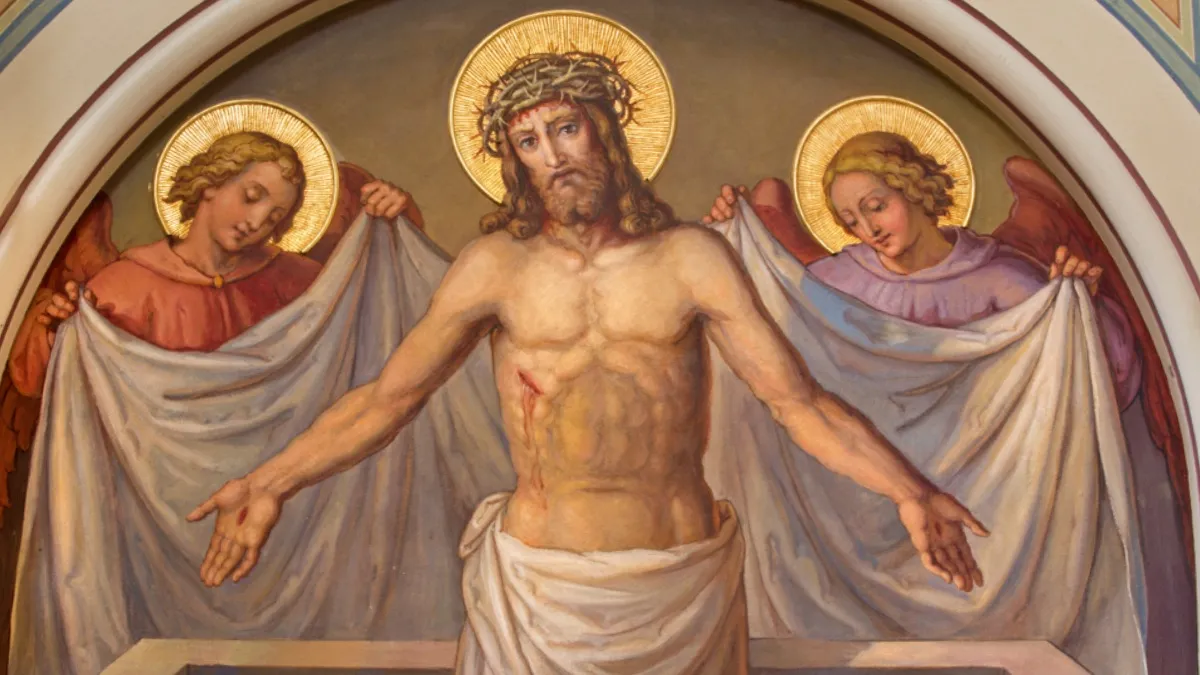Easter is a holiday filled with bunnies, colorful eggs, and baskets of chocolate. However, none of those things are tied to the reason for the holiday, which is the Christian observation of the resurrection of Jesus Christ.
Jesus died on a Friday then resurrected on Sunday morning. The most popular Bible verse that refers to his death and resurrection is Matthew 12:40 and it reads, in part, “The Son of Man will be three days and three nights in the heart of the earth.”
So, is the Bible mathematically challenged or are there other reasons for the claim?
Here are three explanations for the 3-day assertion that, collectively, make it easier to understand the apparent discrepancy and make one realize that it’s likely not a discrepancy at all.
1. What do other Bible verses state
Several other Bible verses speak of the timing between Christ’s death and resurrection slightly differently, at least in regards to the specific wording used.
Matthew 12:40 is somewhat unique because it adds “three nights,” which I’ll more specifically address in the third explanation below.
Despite Matthew 12:40 being the most quoted in relation to Easter, several other Bible verses speak of Christ’s resurrection. Most of them state that Christ will rise from the dead on the third day. For instance, Luke 18:33 reads, “On the third day, he will rise again.”
Such verses make the timetable more understandable, as Friday is the first day of the events and Sunday is the third day. Since this is only two nights then it becomes less confusing considering the nights are not mentioned in this verse as well as other verses that note the timetable.
2. Understanding how days were measured in Biblical times
Over the centuries, how we communicate time has changed. We have a greater understanding now of hours and minutes as opposed to two thousand years ago, when the time of the day didn’t mean the actual time on the clock but rather meant dawn, morning, midday etc. According to Catholic.com, “The ancient Jews counted as a whole day any part of a day, so ‘three days and three nights’ (which means the same as ‘three days’ in modern usage) could be as little as twenty-four hours plus a few seconds.”
Parts of the world measure certain aspects of time somewhat similar to this method. For instance, in China, your age is measured by how many lunar calendar years you’ve existed. So, you are one-year old while living in your first calendar year. Thus, you are born as being one-year of age. When come the new year, you are two-years of age because you are living in your second calendar year. This is true whether you were born 10 months earlier or 2 months earlier. Theoretically, a child born on New Year’s Eve of the lunar calendar would thus be two-years old the following day when, in reality, they are just two-days old.
So, measuring time based on the number of days — in this case, a Friday, a Saturday, and a Sunday — is a similar concept. Thus, despite Jesus dying on a Friday and rising at dawn on a Sunday — which is really less than two days later — that time still consists of three different days.
3. Why “three nights” may also be accurate
As noted earlier, the Matthew 12:40 verse requires an added explanation thanks to it stating that Jesus would spend “three days and three nights in the heart of the earth.”
Reading that carefully, it’s not the “three nights” that needs to be reinterpretated but rather it’s the “heart of the earth” that should be the focus.
Although Jesus died on a Friday, he was arrested on a Thursday — now referred to as Holy Thursday — after what has come to be known as the Last Supper. Although the scriptures do not name the prison he was taken to, a church was built over the area where he was believed to be held. The Church of the Holy Sepulchre houses the prison which basically looks like a small dungeon. In Jesus’ time, scholars believe it was a prison inside of a cave. Whether a basement-like dungeon or a cave, it means that Jesus did spend Thursday night “in the heart of the Earth.” He was then buried on Friday night in a rock-cut tomb, thus inside a natural part of the Earth, where his body remained for two nights.
Despite the timetable, it may not matter at all in the grand scheme of things. Many believers in Christ will tell you that the number of days and/or nights between his death and resurrection is insignificant because it’s the resurrection itself that really matters.











Published: Mar 29, 2024 06:06 pm